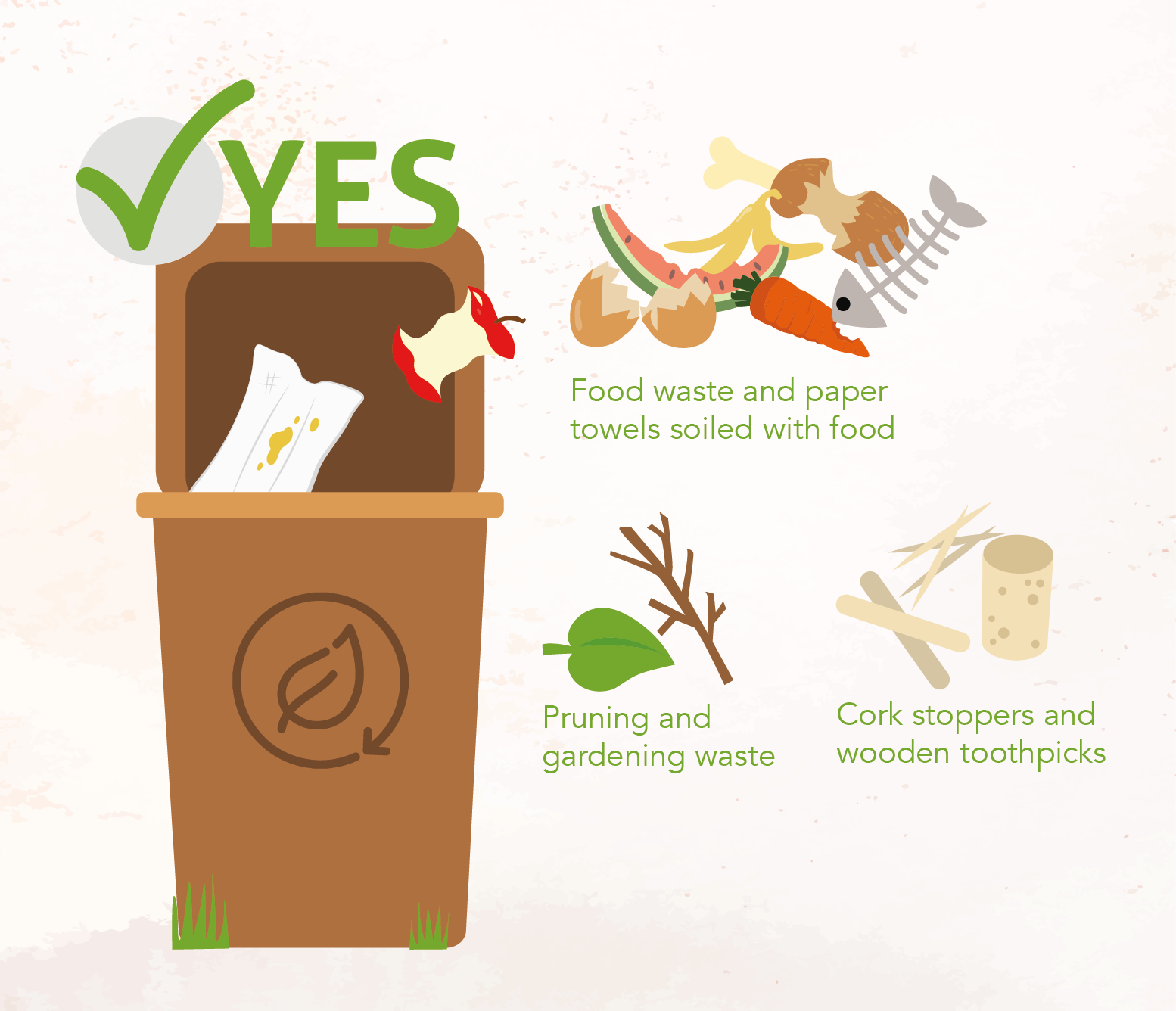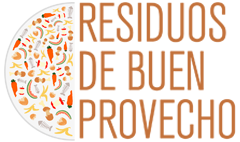1Can organic waste be tossed directly into the brown bin, without a bag?
No, organic waste should always be bagged to minimise liquid spillage and creating unpleasant odours inside the bin.
2Do I have to use biodegradable bags to dispose of organic waste? Can I use plastic bags?
Using biodegradable or compostable bags is not mandatory, but it is advisable, since they break down together with the organic matter so that the plastic bag doesn't have to be separated from the waste at the composting plant, which is the process required for conventional bags (plastic bags).
3Can I use a normal bin for organic waste at home?
You can use any type of bin or container, although an aerated bin, because it has slits, makes it possible to air out the waste inside, helping it to dry out and thus minimising unpleasant odours and the accumulation of liquids at the bottom of the bag.
The Town Council is providing volunteers with an aerated bin with these characteristics to make it easier to sort the waste at the source and then put it in the bin on the public road nearest to their home.
4What is considered smaller garden and pruning waste?
Smaller garden waste is defined as bunches of flowers, grass clippings, dead leaves and leaf litter, small stems of ornamental plants, etc., as long as they are produced in small quantities. Large objects such as branches and woody trunks are excluded, which must be taken to a permanent or mobile recycling centre, and for which a municipal permit (card) is required to dispose of them.
5Can paper or cardboard soiled with organic waste, such as used napkins and paper and cardboard with food or oil on it, be tossed in the brown bin?
As long as the paper or cardboard is made of vegetable cellulose and does not contain dyes or chemicals, it is organic and will be broken down by decomposing micro-organisms. But remember, only if they are dirty from food.
They cannot go into the organic bin if they are soiled with non-food products like paints or detergents.
Of course, if the paper or cardboard is clean it should go in the blue bin for paper and cardboard.
6But what if the stains are of a sanitary nature (blood, mucus, faeces, etc.)?
No, household waste of a biological-sanitary nature, as well as the toilet waste bin, belongs in the other waste bin, which is also where soiled paper should be tossed, since it may contain potential disease-causing pathogens, such as coliform bacteria. The same applies to tossing plasters or other similar dressings, which are also often composed partly or entirely of non-organic materials, such as plastics and glues.
7Can I toss cardboard or paper with dyes in it into the organic bin?
No. Boxes with inks, magazines, newspapers, etc., cannot be disposed of in the organic bin because they may contain chemicals that are toxic to the environment and human health. Only paper or cardboard that has not been bleached and does not contain colours, drawings or lettering can be thrown in the brown bin.
8Can I put coffee capsules in the organic bin?
You can toss coffee grounds in the organic bin, but not coffee capsules, since they contain plastic or aluminium components. If you use capsules to prepare coffee, you should preferably take them to a recycling centre where they are collected separately and recycled. There are also private companies that recycle coffee capsules.
9Can I throw tea bags and other infusions in the organic waste, even if they have a staple in them?
Yes, tea bags can be thrown away with organic waste, since the tea leaves, bag and label are made of biodegradable organic components. As far as staples are concerned, there are very few brands left that use them in tea bags, but they should be removed where possible.
10Do pet excrements and cat litter go in the brown organic bin?
No. Pet faeces and cat litter go in the other waste bin. Although they are biodegradable, faeces cannot be mixed with organic waste because they may contain micro-organisms that can be harmful to human health, such as the bacterium that causes toxoplasmosis in pregnant women, which is found in feline faeces.
In addition, cat litter should not be mixed with organic litter because it is made of mineral matter.
11Can I toss biological waste such as fingernails or hair in the compost bin?
No. Biological waste may contain micro-organisms that are harmful to human health. It is better to discard them in the residual waste bin.
12If I have large quantities of pruning waste, can I throw it in the organic fraction bin?
No, because you could overload the bin and render it unusable for the rest of the people who need it. Remember that it is a tool for recycling organic material for domestic use, and large pruning waste must be taken to the municipal recycling centre.
13Can I toss leftover medicines in the organic waste bin?
No. Medicines, as well as the containers that they came in, must go to the SIGRE point found in pharmacies, since they are considered hazardous waste due to the large amount of chemicals they contain.
14Can I put pet waste, such as sawdust litter from birds or their biological remains when they die, in the brown bin?
No. Pet waste may contain parasites such as viruses, bacteria or nematodes that pose a risk to human health, even after the animal dies.
15Can I toss hunting waste in the organic bin?
No. Hunting waste that has not been treated and passed through a sanitary control may contain micro-organisms that are harmful to animal and human health.
16If I’m a large generator of organic waste, such as a restaurant or café, can I take my organic waste to an on-street organic waste bin?
Yes, waste from the hospitality sector is considered domestic or similar waste, and therefore restaurant and hotel owners can make use of the on-street bins.
However, if they request it, the council may provide them with a bin for inside their establishment to encourage and facilitate the sorting and subsequent recycling of this fraction.


